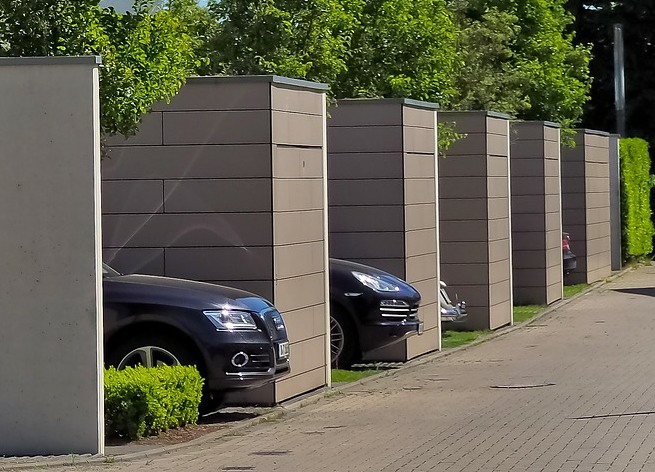Coping and capping
Cappings and copings are used to cap the tops of masonry parapets and freestanding walls to prevent rainwater from penetrating into the construction below. They can be made from profiled metal such as lead, aluminium, zinc, copper and plastic-coated steel, or by using special bricks or masonry.
Irrespective of the materials from which they are made, a coping will typically project by around 50mm on either side of the wall, whereas a capping will sit flush to the wall with no projections.
Copings have projections to throw water as far as possible from the wall surface below. This is facilitated by the inclusion of drips – typically 10mm-wide semi-circular grooves cut into the underside of the projections – designed to prevent rain from dripping back against the wall.
Because of their position, cappings and copings are exposed to temperature extremes and frequent wetting/drying cycles. As they are more exposed than ordinary walling, they should be made of materials that have greater resistance to frost and sulphate action. To assist with water run-off, the tops of copings and cappings typically feature either a single or double slope.
In most cases, the coping/capping arrangement will not be completely water tight. Therefore, to avoid water penetration into the wall below, a damp-proof course is usually installed beneath the coping/capping.
NB Short Guide: Climate Change Adaptation for Traditional Buildings, published on 10 July 2017 by Historic Scotland, defines a cope as a: ‘Masonry or concrete slab projecting over a masonry element, designed to shed water.’
[edit] Alternative meaning
AR5 Climate Change 2014: Impacts, Adaptation, and Vulnerability, Glossary, published by the Intergovernmental Panel on Climate Change (IPCC) defines coping as: ‘The use of available skills, resources, and opportunities to address, manage, and overcome adverse conditions, with the aim of achieving basic functioning of people, institutions, organizations, and systems in the short to medium term.’
It defines coping capacity as: ‘The ability of people, institutions, organizations, and systems, using available skills, values, beliefs, resources, and opportunities, to address, manage, and overcome adverse conditions in the short to medium term.’
[edit] Related articles on Designing Buildings
Featured articles and news
RTPI leader to become new CIOB Chief Executive Officer
Dr Victoria Hills MRTPI, FICE to take over after Caroline Gumble’s departure.
Social and affordable housing, a long term plan for delivery
The “Delivering a Decade of Renewal for Social and Affordable Housing” strategy sets out future path.
A change to adoptive architecture
Effects of global weather warming on architectural detailing, material choice and human interaction.
The proposed publicly owned and backed subsidiary of Homes England, to facilitate new homes.
How big is the problem and what can we do to mitigate the effects?
Overheating guidance and tools for building designers
A number of cool guides to help with the heat.
The UK's Modern Industrial Strategy: A 10 year plan
Previous consultation criticism, current key elements and general support with some persisting reservations.
Building Safety Regulator reforms
New roles, new staff and a new fast track service pave the way for a single construction regulator.
Architectural Technologist CPDs and Communications
CIAT CPD… and how you can do it!
Cooling centres and cool spaces
Managing extreme heat in cities by directing the public to places for heat stress relief and water sources.
Winter gardens: A brief history and warm variations
Extending the season with glass in different forms and terms.
Restoring Great Yarmouth's Winter Gardens
Transforming one of the least sustainable constructions imaginable.
Construction Skills Mission Board launch sector drive
Newly formed government and industry collaboration set strategy for recruiting an additional 100,000 construction workers a year.
New Architects Code comes into effect in September 2025
ARB Architects Code of Conduct and Practice available with ongoing consultation regarding guidance.
Welsh Skills Body (Medr) launches ambitious plan
The new skills body brings together funding and regulation of tertiary education and research for the devolved nation.
Paul Gandy FCIOB announced as next CIOB President
Former Tilbury Douglas CEO takes helm.
UK Infrastructure: A 10 Year Strategy. In brief with reactions
With the National Infrastructure and Service Transformation Authority (NISTA).























